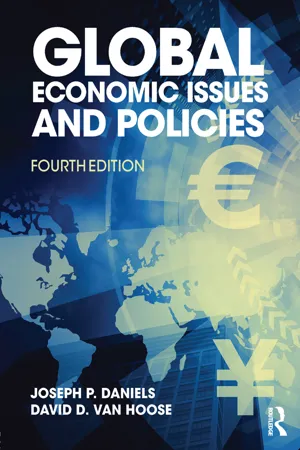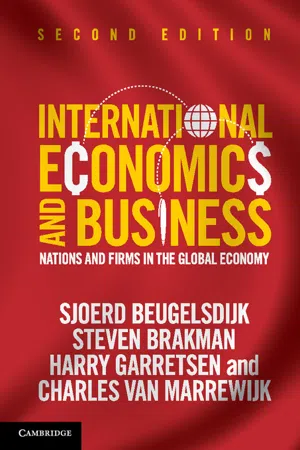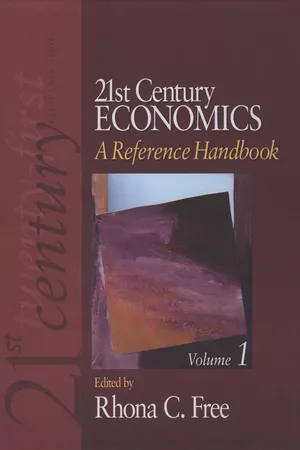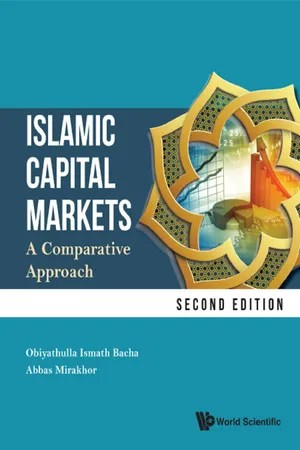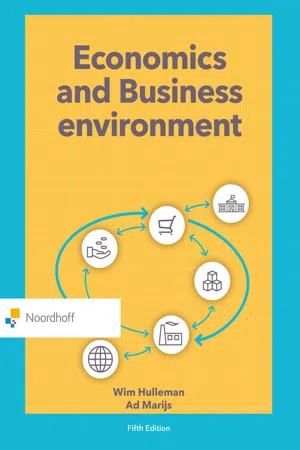Business
Spot Rate
The spot rate refers to the current exchange rate for a currency, which is the price at which a currency can be bought or sold for immediate delivery. It is the prevailing market rate at a specific point in time and is used for immediate transactions, such as currency exchanges or international trade deals.
Written by Perlego with AI-assistance
Related key terms
1 of 5
6 Key excerpts on "Spot Rate"
- eBook - ePub
- Joseph P. Daniels, David D. VanHoose(Authors)
- 2017(Publication Date)
- Routledge(Publisher)
The spot market for foreign exchange is the market for contracts requiring immediate delivery of currencies. The spot market for foreign exchange is dominated by large-value transactions among commercial banks and foreign exchange brokers. Spot exchange rates are the prices of currency transactions that occur in this market. Economists use spot exchange rates to measure the appreciation and depreciation of currencies and to construct cross rates, real exchange rates, and effective exchange rates.Foreign exchange risk and the forward market for foreign exchange
Exchange rates vary over time. Changes in exchange rates expose house holds, firms, and others who engage in international transactions to potential risk.Foreign exchange risk
Let’s consider an example of how an international transaction may expose a firm to risk from exchange rate changes. Suppose you work for an inter national property developer based in the United States, and your firm has an interest in commercial real estate in the United Kingdom. The property agents will consider “substantial offers” on the property for a period of three months, at which time they will arrange sale of the property to the party submitting the highest offer. It will take approximately three more months for your employer to conclude the transaction and to assume possession of the property.Based on an estimate of the property’s income potential, your managers instruct you to submit a bid of £15 million. Suppose that the exchange rate is currently 1.2488 dollars per pound, so from your firm’s perspective, the current price of the bid that you are submitting is $18,732,000, or the dollar price of the offer (£15 million × 1.2488 $/£ = $18,732,000). Your managers have indicated that they value the property at $18,732,000.Foreign exchange risk:The risk that the value of a future receipt or obligation will change due to variations in foreign exchange rates.Suppose the sellers of the property accept your offer to pay £15 million six months from now. Your firm has a foreign-currency-denominated obligation that spans time and, therefore, creates a foreign-exchange-risk exposure. Foreign exchange risk - eBook - PDF
International Economics and Business
Nations and Firms in the Global Economy
- Sjoerd Beugelsdijk, Steven Brakman, Harry Garretsen, Charles van Marrewijk(Authors)
- 2013(Publication Date)
- Cambridge University Press(Publisher)
Almost 50 per cent of euro area exports to non-euro countries use the euro as invoice currency. The second most important currency is the US dollar; other currencies follow at a large distance. Hedging exchange rate risks with all sorts of derivatives tends to be successful in reducing exposure to exchange risks, more in the short run than in the longer run. Exchange rates 229 yen in terms of British pounds. Since the exchange rate is a price, a rise in the exchange rate indicates that the item being traded has become more expensive, just like any other price rise indicates. Therefore, if the exchange rate of a Singapore dollar in terms of European euros rises, this indicates that the Singapore dollar has become more expensive. Various specialized symbols have been introduced to identify speci fi c currencies, such as $ to denote (US) dollars, € to denote European euros, £ to denote (British) pounds, and ¥ to denote (Japanese) yen. Table 8.1 lists some of these international currency symbols. The table also lists the three-letter international standard (ISO) code to identify the currencies. Spot exchange rates As discussed below, there are various types of exchange rates, but we fi rst focus attention on the spot exchange rate, the price of buying or selling a particular currency at this moment. Table 8.2 lists some spot exchange rates as recorded on 24 July 2012, at 8.29 a.m. ET (Eastern Time). The fact that we have to be so precise by listing not only the day on which the spot exchange rates were recorded, but also the exact time and the time zone signals an important general property of exchange rates: they are variable. In fact, exchange rates are extremely variable : only a few minutes later all quoted prices for the spot exchange rates deviated from the data reported in Table 8.2 . - No longer available |Learn more
- (Author)
- 2019(Publication Date)
- Wiley(Publisher)
Foreign Exchange Market Concepts We begin with a brief review of some of the basic conventions of the FX market that were covered in the CFA Level I curriculum. In this section, we cover (1) the basics of exchange rate notation and pricing, (2) arbitrage pricing constraints on Spot Rate foreign exchange quotes, and (3) forward rates and covered interest rate parity. An exchange rate is the price of the base currency expressed in terms of the price currency. For example, a USD/EUR rate of 1.3650 means the euro, the base currency, costs 1.3650 US dollars (an appendix defines the three-letter currency codes used in this reading). The exact notation used to represent exchange rates can vary widely between sources, and occasionally the same exchange rate notation will be used by different sources to mean completely different things. The reader should be aware that the notation used here may not be the same as that encountered elsewhere. To avoid confusion, this reading will identify exchange rates using the convention of “P/B,” referring to the price of the base currency “B” expressed in terms of the price currency “P.” 1 The spot exchange rate is usually used for settlement on the second business day after the trade date, referred to as T + 2 settlement. 2 In foreign exchange markets—as in other financial markets—market participants are presented with a two-sided price in the form of a bid price and an offer price (also called an ask price) quoted by potential counterparties. The bid price is the price, defined in terms of the price currency, at which the counterparty is willing to buy one unit of the base currency - eBook - PDF
- Rhona C. Free(Author)
- 2010(Publication Date)
- SAGE Publications, Inc(Publisher)
It can be argued that not only the value of a currency but also its predictability can affect interna-tional businesses. If one company is going to have opera-tions in a country whose currency has an uncertain future value, then there may be uncertainty about this company's future revenues, operational costs, and therefore profits. As it is well known, risk-averse companies prefer to decrease the risk and uncertainty of future revenues and costs. In addition to its importance for trade and investment across countries, the exchange rate is important as the essential component of the foreign exchange market or FX market. The FX market, the global market for cur-rencies, is the largest and most liquid financial market in the world. According to a survey conducted by the Bank for International Settlements (2002), the average daily trade in the FX market surpasses U.S.$1.2 trillion. All of these reasons and many more make study of exchange rates an essential component of the curriculum for any student of economics or aspiring economist. That is why this handbook has decided to dedicate an entire chapter to the topic of exchange rates. In this chapter, you will learn about the functioning of the foreign exchange rate system. We start by giving a historical account of the different exchange rate systems around the world. In the past, particularly in the period from World War II to the end of the Bretton Woods era, it was common for many countries around the world to have fixed exchange rates. That is, the value of the currency was pegged to the value of some other currency. This arrangement was adopted by different countries with the hope that it would avoid uncertainty about the value of their currency and the economic conse-quences of such uncertainty. Nowadays, most major cur-rencies are flexible, and their values are determined by demand and supply in the foreign exchange market. - eBook - ePub
Islamic Capital Markets
A Comparative Approach
- Obiyathulla Ismath Bacha, Abbas Mirakhor(Authors)
- 2019(Publication Date)
- WSPC(Publisher)
Foreign exchange transactions can be categorized into two broad categories: spot transactions and forward transactions. As the name suggests, a spot transaction is for immediate delivery whereas a forward transaction is for delivery at a predetermined future date. Suppose one wants a foreign currency immediately, the appropriate price to pay would be his or her bank’s quoted Spot Rate for the currency. When it comes to exchange rate quotation, most financial newspapers would show three categories of quotes. These are:• Spot quotes• Forward quotes• Cross ratesAs mentioned above, the spot quote gives the spot price of a foreign currency. Spot exchange rates come in two versions or terms, American terms and European terms. Both refer to the same exchange rate but from different viewpoints. When an exchange rate is quoted in American terms, it would be in the form of:Home Currency price per unit foreign currency (HC per FC). A quote in European terms on the other hand would be: Foreign currency price per unit home currency (FC per HC). For example, we see the MYR/US$ quote as follows: RM3.24 per US$, this would obviously be an American term quote. Alternatively, if the quote is: US$0.3086 per MYR, this would be the European term quote.In Malaysia, both the American and European terms are used in exchange rate quotations. Converting from one to another is easy; one simply takes the reciprocal. For example, in the above quotation, the taking reciprocal of the American term quote of MYR/US$ rate gives the European term equivalent.A point of caution is in order. Since each quotation term states the price in terms of a different currency, one has to mindful of needed changes when using Equations 13.1 and 13.2 earlier in the chapter, when computing percentage appreciation or depreciation.13.7.Bid-Ask SpreadsIn currency transactions, banks do not charge commissions. They profit from bid-ask spreads. The bid-ask spread, often denoted as b-a spread, refers to the difference between the prices at which the bank buys versus sells a foreign currency. Generally:Bank buys at the = bid price Bank sells at the = ask price So, the bid-ask spread is essentially the difference between the buy and sell prices and would constitute the profit earned by the bank.Box 13.4. Illustration: The Bid-Ask Spread - eBook - ePub
- Wim Hulleman, Ad Marijs(Authors)
- 2021(Publication Date)
- Routledge(Publisher)
Table 10.2 , the forward rate of the euro against the dollar shows a premium. To take an example, the twelve month forward rate is at a premium of $0.0198. A currency trader who sells euros for dollars on the twelve month forward market on 20 January 2017 will receive $1.0830 (= $1.0632 + $0.0198) per euro one year months later.TABLE 10.2Spot and forward rates of the euro on 20 January 2017USD GBP CHF JPY Spot Rate 1.0632 0.8659 1.0727 122.47 1 month 0.0010 0.0005 ‒0.0004 0.04 3 months 0.0037 0.0016 ‒0.0011 0.10 6 months 0.0085 0.0033 ‒0.0023 0.16 12 months 0.0198 0.0095 ‒0.0043 0.28 Source: HetFinancieele Dagblad, 20 January 2017; global-rates.comTrade 24 hours a day10.1.2 Market size and characteristics of the exchange trade
Average daily turnoverTurnover on the international exchange markets is very large indeed. According to the Bank for International Settlements, the average daily turnover in 2016 was $5,100 billion. In that year a four-day turnover on the international exchange markets would have been enough to finance the whole of the world’s trade in goods.The exchange market is a highly transparent market. This means that the currency traders can be aware of the prices in the various financial centres at any time of the day. The rapid availability of exchange rate information makes it virtually impossible for there to be any difference between London and Frankfurt in the exchange rate of the euro against the dollar. Any exchange rate difference will disappear through arbitrage. Arbitrage is taking advantage of the difference between the exchange rate at different financial centres at one moment in time. If the exchange rate of the euro in Frankfurt is $1.25 and $1.24 in London at a certain time, currency traders will buy euros in London and sell them in Frankfurt. This will lead to an appreciation of the euro in London and a depreciation of the euro in Frankfurt. The exchange rate difference (not counting transaction costs) between the two financial centres will eventually disappear through arbitrage. Arbitrage does not involve any risk because it is based on the exchange rate difference between financial centres at a given moment in time.
Index pages curate the most relevant extracts from our library of academic textbooks. They’ve been created using an in-house natural language model (NLM), each adding context and meaning to key research topics.
